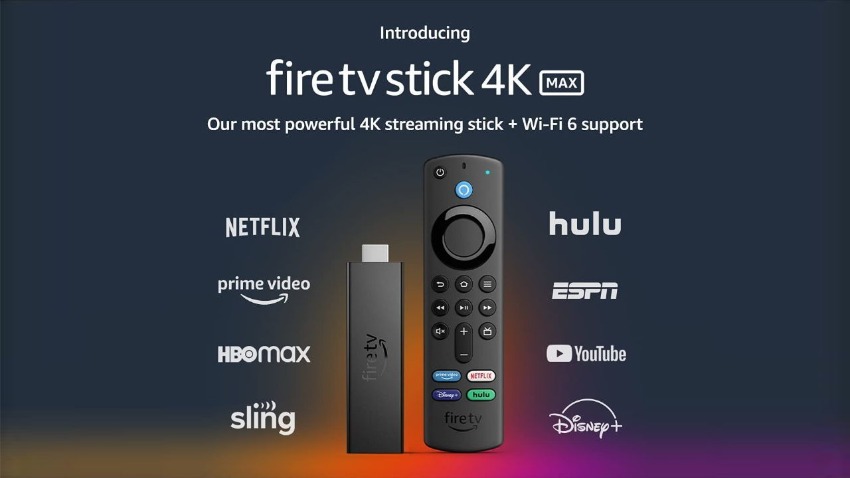Amazon adds the Fire TV Stick 4K Max to its catalogue of multimedia boxes. The little stick dedicated to streaming content evolves smoothly: faster, it benefits from wifi six and a push of buttons on its remote control.
We might as well say it straight out; Amazon isn’t changing its formula with the Fire TV Stick 4K Max. Thus, we find a minor key dedicated to multimedia streaming that takes the form of the Fire TV Stick 4K, released in 2019. Support for 4K content at 60 fps with HDR management (Dolby Vision, HDR10, HDR10+ and HLG) is still part of the package, as is the management of Dolby Atmos audio signals.
Four points of differentiation are notable, however, starting with the embedded chip. The MediaTek MT8695 SoC from the Fire TV Stick 4K is swapped for the MT8696, a newer version that features a higher operating frequency on the processor (+100 MHz) and a more peachy graphics circuit. The RAM gains 512 MB and is now 2 GB, accompanied by 8 GB of storage space.
The communication part also evolves; Amazon has decided to offer the support of wifi 6, faster than the wifi 5 embedded on the other models of Fire TV Stick. With a box or a suitable router, the switch to wifi six promises better management of 4K video streams at high speed. Bluetooth 5.0/LE is still supported.
Finally, the last evolution concerns the remote control, which essentially gains new buttons for immediate access to Prime Video, Netflix, Disney+ and Amazon Music apps. A Guide button has also been added to the remote control. Without further precision from the manufacturer, we can imagine that it will allow us to note the program guide in the compatible apps. We also find the microphone, which can be activated via the Alexa button; this has the effect of launching the eponymous virtual assistant.
The Fire TV Stick 4K Max is already on pre-order, but deliveries will only start from October 7, 2021. Let’s bet that Amazon will not fail to offer this new streaming box at a lower price per period.

